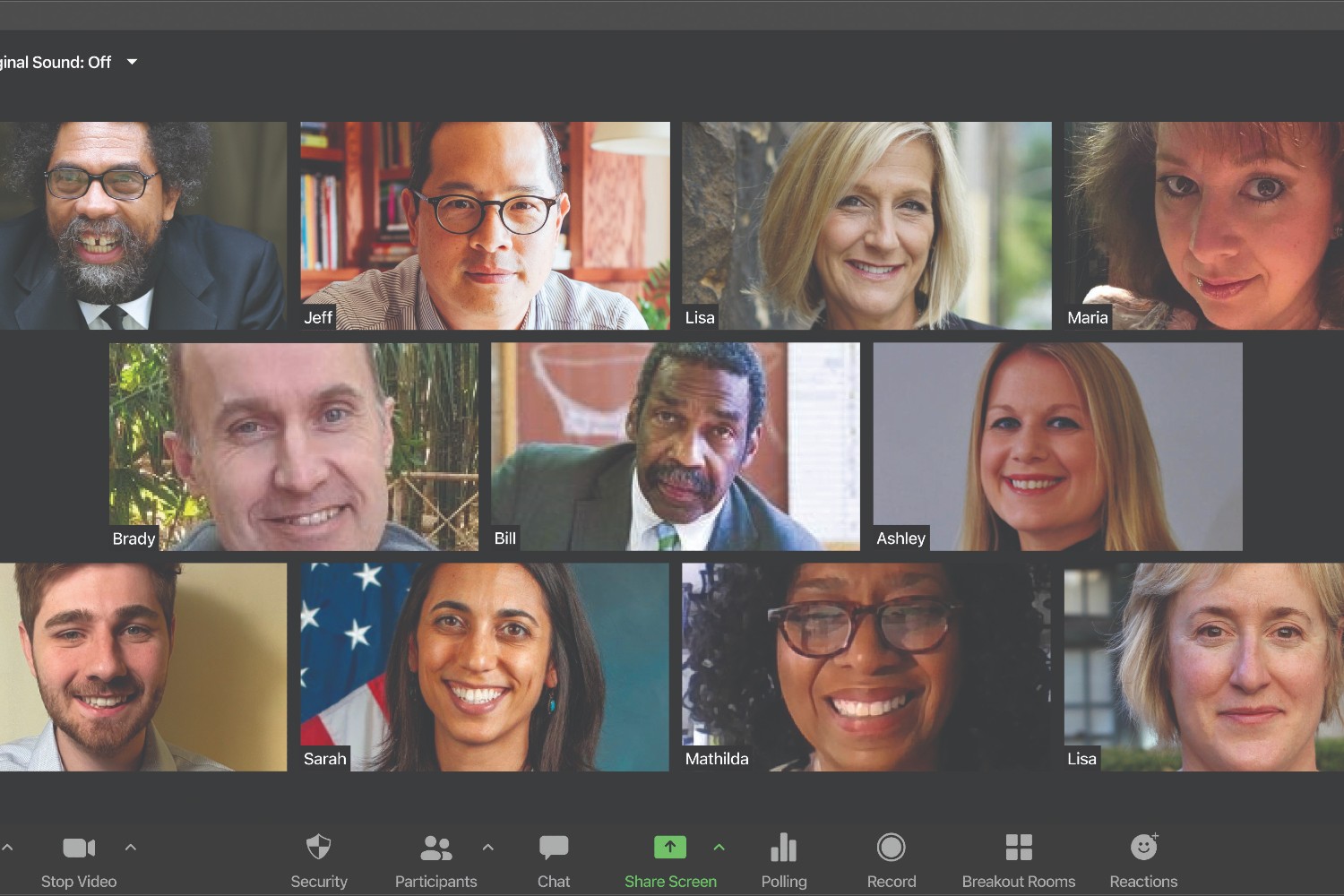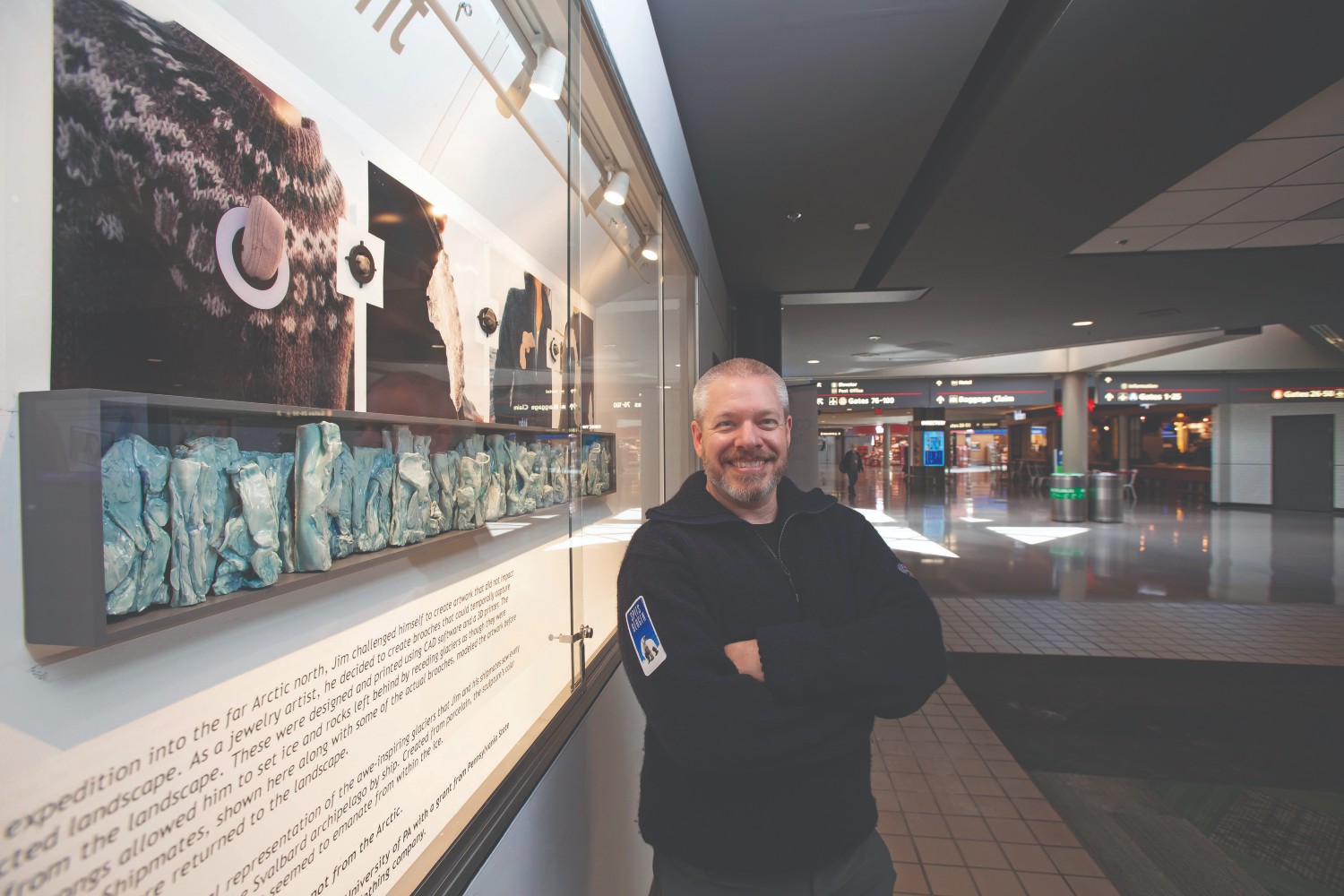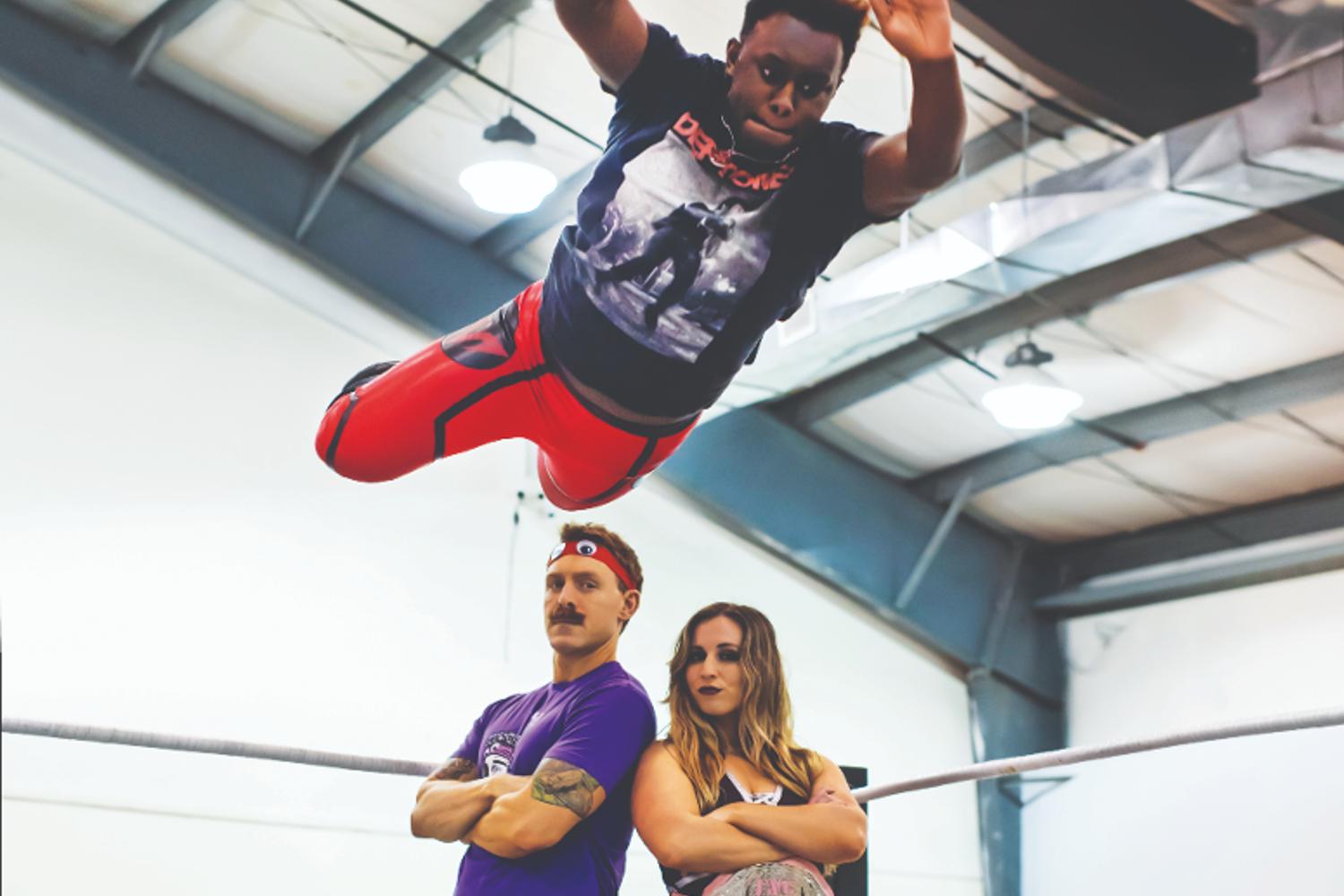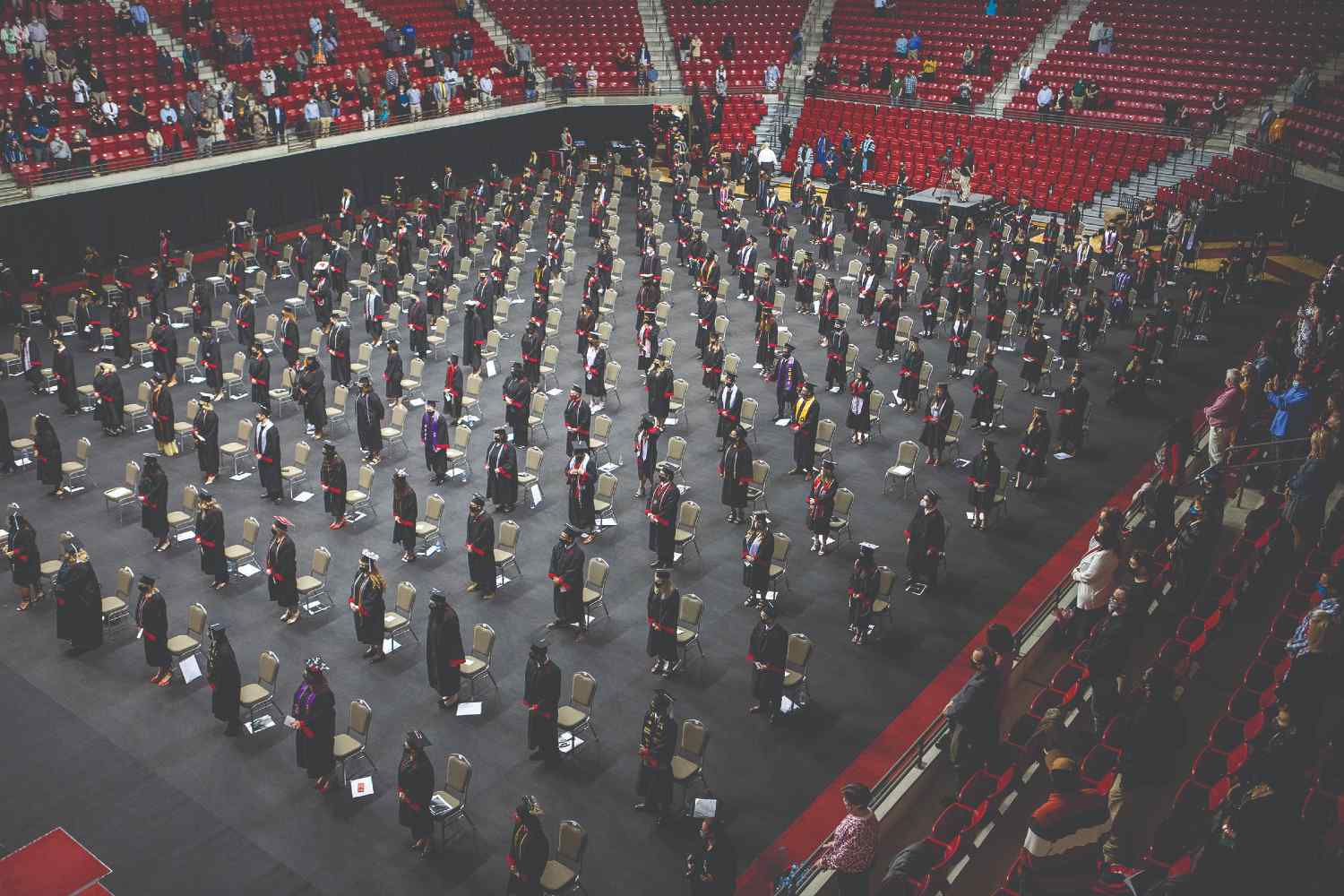Lab experiments,” says Cal U chemistry professor Dr. Kimberly Woznack, “are some of the most
fun parts of science courses.”
A proactive approach made sure they remained both fun and educational, even while Cal U’s labs and classrooms were closed in response to the COVID-19 pandemic.
“We’ve been very proactive in identifying the educational resources both faculty and students needed this fall,” says Dr. Brenda Fredette, dean of the Eberly College of Science and Technology.
That included professional development for faculty – already experts in their fields – that focused on instructional design and best practices in online teaching.
At least one faculty member from each department that would include a science lab received advanced training in how to design hands-on experiments for an online environment. That group then served as teacher-mentors for their Cal U colleagues.
Professors learned “how to build the lab experience in a meaningful way, so that students are thinking about what they’re doing and engaging with the concepts,” Fredette says.
“Follow-up activities give students the opportunity to use what they’ve learned to demonstrate their knowledge.”
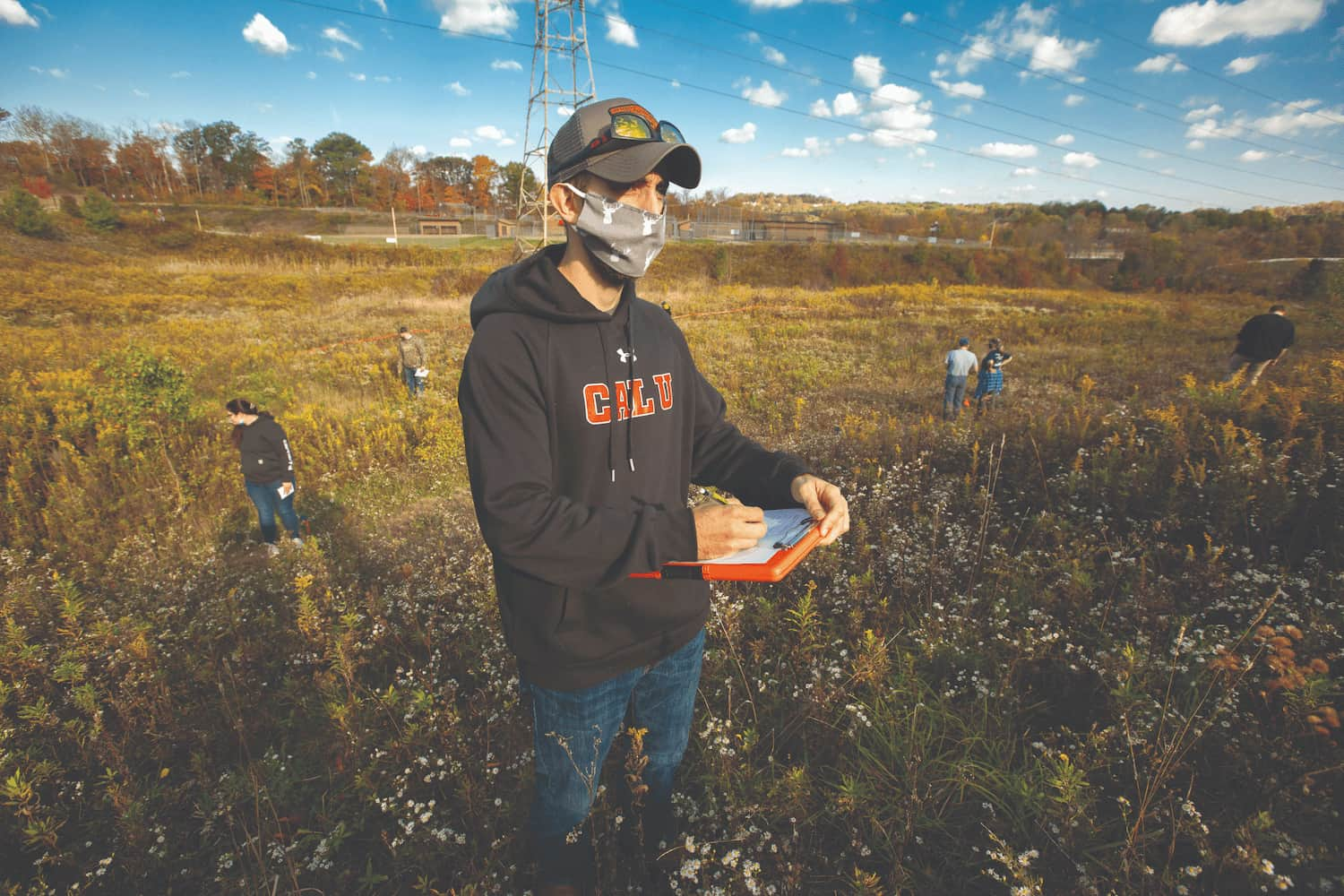
In the Field
Students in certain biology, microbiology, cell biology and chemistry courses were mailed kits with tools and materials, so they didn’t have to worry about gathering supplies.
Outdoor or socially distanced “boot camp” experiences helped students in specialized majors meet program requirements. For example, veterinary technology students worked with large animals at a designated farm site.
Under the watchful eyes of program director and veterinarian Dr. Nancy Pugh and vet tech coordinator Kelly Gustine, students spent several days at the Washington County location. They practiced performing essential skills like physical examinations, blood draws and injections.
“I love to actually get to experience what it’s like to work with an animal instead of reading a textbook,” student Coco Pahanish says. “I’m thankful there was a way to make it work this semester. It’s my favorite.”
Other students completed their lab work at home.
For his Sedimentation and Stratigraphy course, Dr. Kyle Fredrick ordered sedimentary rock kits and microscopes for students, and he sent them samples of sand for analysis and reporting.
Students in Dr. Louise Nicholson’s genetics course gained hands-on experience in DNA extraction, genetic crosses and artificial selection, DNA fingerprinting and more, all without leaving home.
In Human Anatomy, real-time interactions with professors Dr. Brian Paulson and Dr. Jesse Eiben guided students through the structure of human body systems. Simulation software allowed students to perform “dissections” in a virtual environment.

Industry Software
In the mechatronics engineering technology program, faculty converted hands-on sessions to simulations using industry-recognized software.
“Festo is an industrial equipment manufacturer and also a vendor for the lab equipment we have at Cal U,” explains program coordinator Dr. Jennifer Wilburn. “The simulation packages are made to supplement that hardware and teach the same principles.”
Mechatronics students also used software from Tooling U-SME, which produces certifications and content for the manufacturing industry.
In chemistry, Dr. Matthew Price created videos of experiments for his junior-level organic chemistry course. Students used an electronic “notebook” to organize experiment reports, and small groups met in Zoom breakout rooms to review concepts and make calculations.
Woznack’s first-year chemistry students learned about the relationship between pressure and volume of a gas sample using a simulation that let them manipulate variables such as temperature and sample size.
Still other professors reached out to professional organizations to develop resources.
Dr. Carol Bocetti, a wildlife biologist in the Department of Biology, Geology and Environmental Sciences, began collaborating with The Wildlife Society’s College and University Wildlife Education Working Group on best practices for remote learning.
She also worked with colleagues at the U.S. Forest Service, the Pennsylvania Game Commission and two wildlife refuges to create videos of hands-on techniques used to study pine martens, box turtles and black bears.
The positive side to remote learning, Bocetti says, is that students can see “a wider variety of organisms and habitats” as they watch a number of professional field biologists put field techniques into practice.
Wilburn agreed that technology can open doors to new learning opportunities.
“We have a finite amount of equipment in our lab,” she says, “but if you’re working on a simulation, everyone can work independently and spend more time learning some of the processes. We can use Zoom breakout rooms for the teamwork experience that industry looks for.”


